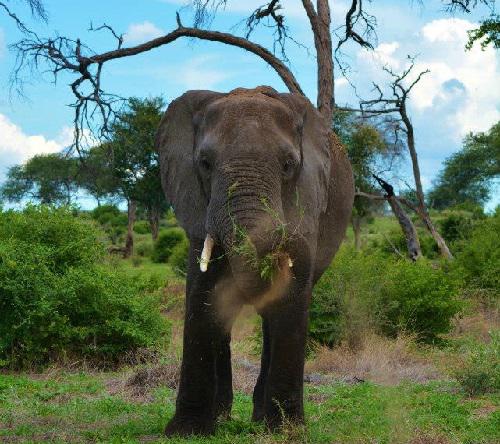Amy Laura Chamberlain
The aim of this project is to produce a cost-benefit model of several crop-raiding management strategies, to enable targeting of the most economically viable strategy on a farm-specific basis; if a farmer can afford to maintain a strategy, it is more likely to be successful in the long-term.

Elephant.
Human elephant conflict currently stands as one of the greatest threats to African elephant populations. Consequently, a number of crop raiding management strategies have been developed and implemented across African elephant range states. Since poverty is wide-spread in these regions, the economic costs of implementing and maintaining these strategies is likely to be a major limiting factor in their long-term success. Therefore, a cost benefit analysis is necessary to target individual farmers with the most economically viable strategy for them, ensuring sustainability in conflict prevention.
Botswana supports the largest population of African elephants and upto 40% of annual subsistence harvest is lost to elephant crop raids. I am using a walked-line transect method in communities on the western border of Makgadikgadi Pans national park, Botswana, to record crop species composition and elephant damage in the fields of participating farmers. By applying market prices to the species composition values, an economic value for each field will be calculated. Similarly, by recording the species of damaged plants along the transects, I will use these market prices to accurately estimate the cost of elephant damage. Recording the species of damaged plants also infers elephant preferences for particular crop species, enabling farmers to plough crops less favoured by elephants, immediately reducing damage.
The cost of elephant crop damage in each field will be compared to the cost of implementing and maintaining conflict prevention measures, including chilli pepper, bee-hive and electric fences. This will determine which strategy is most appropriate for every farmer participating in the study. As well as directly advising local farmers, these data will be used to construct a model allowing future farmers to provide simple details of their field, such as area, and work out the best strategy to invest in.
For the farmers in my study area, who are entirely reliant on their crops for subsistence, whether or not they can afford to maintain the strategy will be one of the biggest factors determining its success. Therefore, if a farmer is targeted with the most suitable strategy for their field, it is more likely to have a longstanding impact on conflict. A farmer who is empowered to protect their livelihood, will no longer view elephants as a threat, leading to improved local perceptions of this species and more supportive attitudes towards elephant conservation. With the support of local people, African elephant conservation efforts have a much greater chance of success.